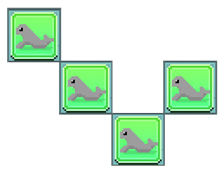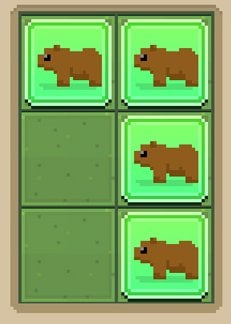

Larger, stronger cats like lions easily overwhelm them, so cheetahs tend to opt for flight versus fight. Because of their short teeth, cheetahs must kill prey by suffocation.Ĭheetahs do not roar, but they make sounds including purrs, barks, growls, hisses and chirps that are unlike those of any other cat. Without large teeth, cheetahs' fighting abilities are limited. Their large nasal passages leave little room for the long roots required to anchor big teeth. A cheetah's spine works as a spring for its powerful back legs, extending the cheetah's reach with each step, but the movement is physiologically taxing.Ĭheetahs pay a price for their speed.

They may also provide an enhanced ability to intimidate. The dark tear marks beneath each eye may aid in hunting by minimizing the sun's glare. Their small, flat-faced heads allow their eyes to be positioned for maximum binocular vision. The cheetah's tail acts as a rudder for quick turning, counteracting its body weight.Ĭheetahs' eyes have elongated retinal foveas (the small, rodless areas of the retina), giving them a sharp, wide-angle view of their surroundings. These structural adaptations help lengthen their stride and provide superior acceleration. Cheetahs have small collarbones and vertical shoulder blades, which are not attached to the collarbone, as well as hips that swivel on a flexible spine. A greyhound-like body is streamlined over light bones. A large liver, heart and adrenal gland facilitate a rapid physical response. Large nostrils and lungs provide quick air intake that allows cheetahs to breathe more easily while running and suffocating their prey. Special paw pads and semi-retractable claws provide great traction. No other land mammal surpasses their short sprints. Cheetahs can accelerate from zero to 45 miles per hour (zero to 72 kilometers per hour) in just 2.5 seconds. That top speed averages between 60 and 70 miles per hour (96 and 112 kilometer per hour) and can be maintained for only about 300 yards (274 meters). At top speed, they advance 23 feet (7 meters) in a single stride and complete four strides per second. Much like a human fingerprint, a cheetah's spots and the ring pattern of its tail are unique, enabling researchers in the field to identify individuals.Ĭheetahs are aerodynamically built for speed and are the fastest land mammal. A cheetah cub's smoky gray mantle may serve as added camouflage among dead grasses.

Camouflage is essential not only for stalking prey, but also for protecting cheetah cubs from predators. Their spots may offset the shadows in the gray-hued grasses they often inhabit, allowing them to blend in with their surroundings. The tail ends with four to six black rings and a bushy white or black tuft.Ĭheetahs' spots may serve as camouflage for both hunting and hiding. The spots cover nearly the entire body only the white throat and belly are unmarked. A cheetah's teeth are small when compared with other big cats, which accommodates their larger nasal passages that enable quick air intake.Īdults have yellow or tan short, coarse fur with solid black round or oval spots measuring 0.75 to 1.5 inches (1.9 to 3.8 centimeters) in diameter. A black tear mark runs from the inner corner of each eye down to the mouth. Their heads are small with high-set eyes. Cheetahs have slender, long-legged bodies with blunt, semi-retractable claws.


 0 kommentar(er)
0 kommentar(er)
